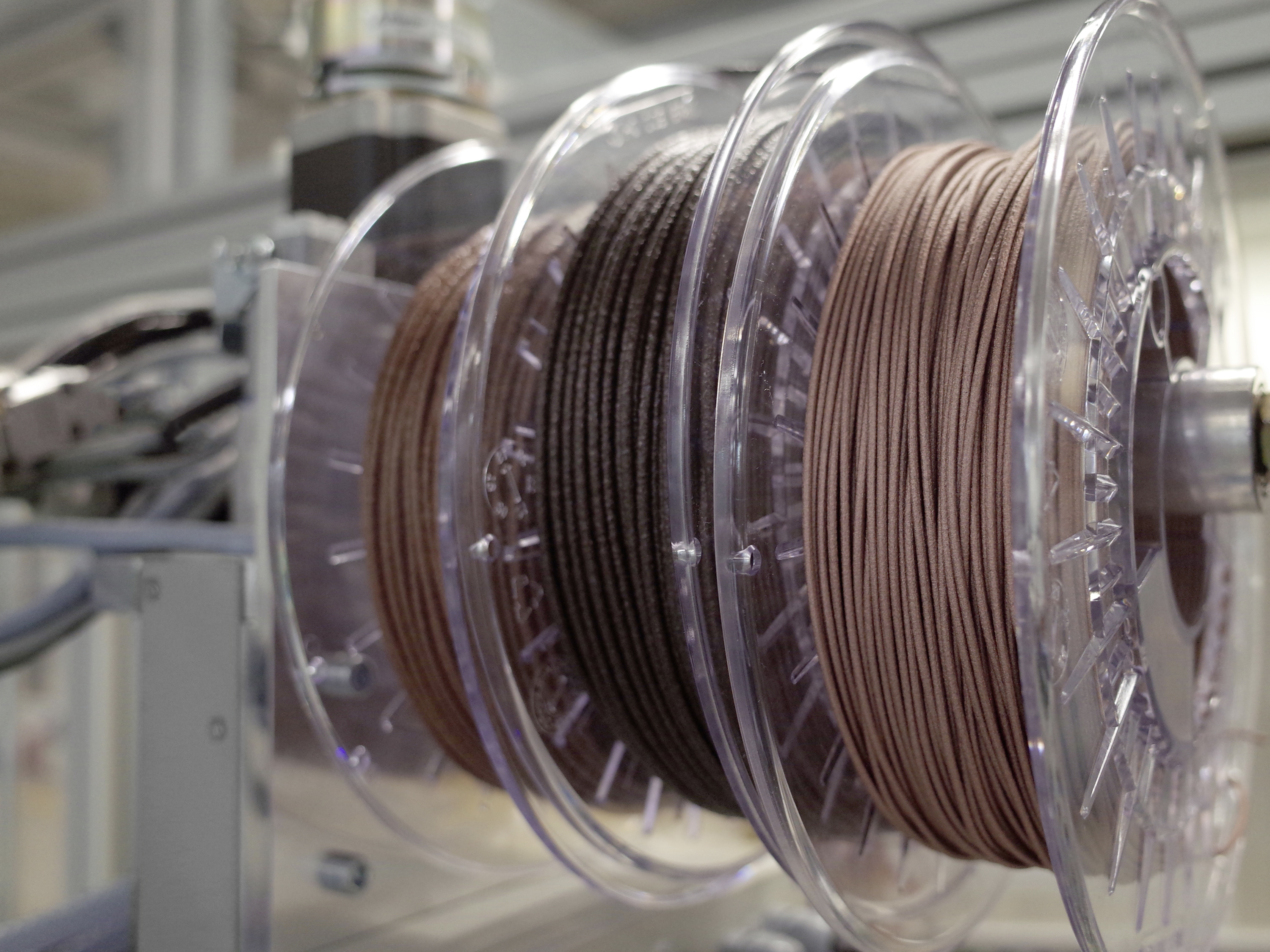Integration of highly electrically and thermally conductive fillers in a plastic material
The integration of highly electrically and thermally conductive fillers in a plastic, with almost constant processing possibilities, gives rise to a new material system that offers the user a very wide range of applications. The further processing via 3D printing offers additional functional and design advantages and aspects.
Fraunhofer IFAM is specialized in the compounding of highly filled special polymer composites and the further processing into printable composite filaments. For the processing or production of filaments from polymer composites, the institute has comprehensive know-how and the latest technologies and process techniques. The composition of the material (fillers, filler content) and the selection of the base polymer are customized according to the customer's specific requirements.
Fraunhofer IFAM runs a complete special line for forming composites into printable filaments. The »Functional Composites« working group is experienced in the processing and production of filaments from polymer composites.
Production of filaments from polymer composite materials
Thermoplastics such as PA6, PA6.6, PA12, PP, PPS, ABS, PEI and PEEK, etc., as well as thermoplastic elastomers (TPE), among others, can be used as matrix polymers. As fillers, a large number of metallic fillers can be incorporated in powder, granular and fiber form via versatile metering techniques. Other filler components such as graphite, carbon derivatives and ceramic components can also be processed, as well as functional materials from the magnetic sector.
For 3D printing (also known as Fused Filament Fabrication, or FFF for short), the composite granules obtained are extruded into filaments with a homogeneous microstructure, the geometric quality is checked and they are assembled onto rolls. The special filaments for FFF printing / FDM printing can be produced in 1.75 or 2.8 mm according to customer requirements. The materials can be printed directly on commercially available 3D printers. This allows the production of 3D-printed components with special properties.
In the production of the composites and subsequently the filaments, two "routes" can be used to meet the user's needs. In addition to printing the FFF material and obtaining the finished component, it is also possible to design the starting material in such a way that, after the printing process, a debinding of the plastic followed by a sintering process results in a purely metallic component.
Function integration through further processing in 3D printing
In addition to the processing or production of filaments made of functional composites, these materials can also be prepared as suitable granules for further processing using a pellet print head. This is interesting for applications in automotive engineering, aviation, rail technology, energy technology, medical technology and environmental technology, among others. There, the specific composite materials can be ideally processed in 3D printing using filaments and granules with the integrated functional materials in order to integrate functions efficiently and with new possibilities in prototypes and small series.
Shaping and functionalization are core competencies of Fraunhofer IFAM. In the »Functional Composites« working group, Arne Haberkorn develops filaments and granulates with high filler contents and special functions especially for 3D printing. In the »Smart Systems« department, the group has comprehensive know-how and the latest technologies in function integration. The fields of application range from automotive engineering and aerospace technology to medical technology.
 Fraunhofer Institute for Manufacturing Technology and Advanced Materials IFAM
Fraunhofer Institute for Manufacturing Technology and Advanced Materials IFAM